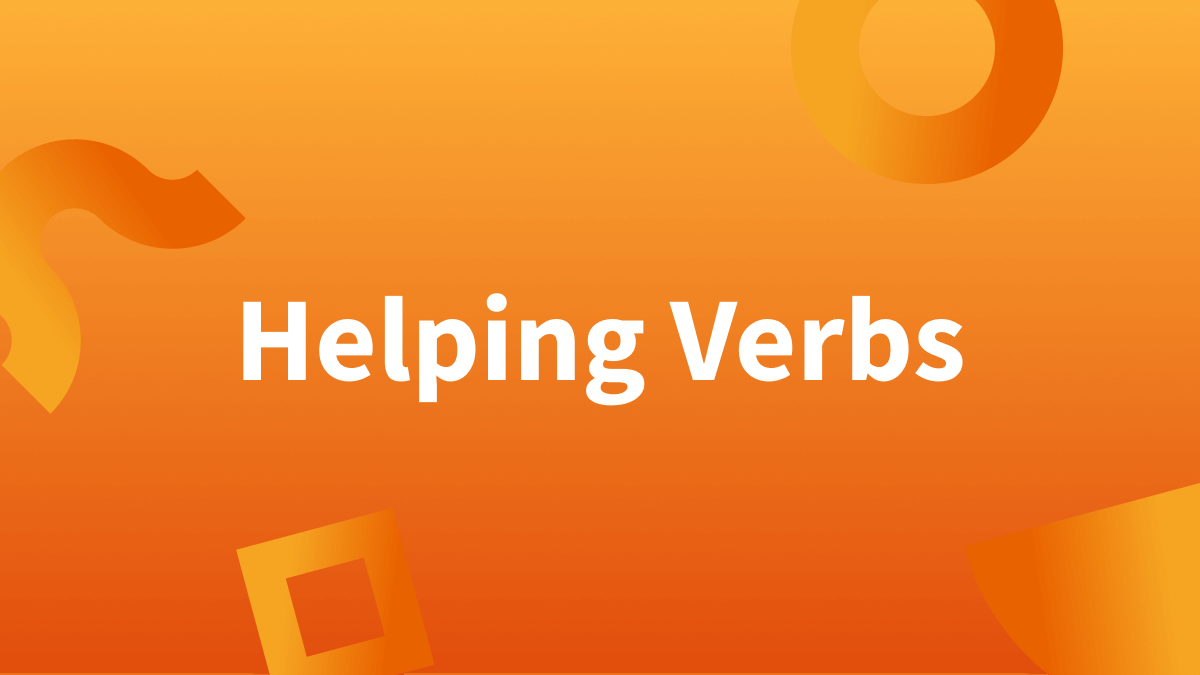Quick Summary on Helping Verbs
- Helping verbs (also known as auxiliary verbs) help the main verb of a sentence by adding grammatical information to it, like tense, voice, or possibility.
- The most common auxiliary verbs are be, do, and have (and their conjugated forms).
- Modal auxiliaries include can, could, may, might, will, would, shall, should, and must.
What Are Helping Verbs?
Helping verbs add information to the main verb, whether it be by indicating time, voice, possibility, necessity, obligation, other vital information, or by helping form a question. Just in case you need a refresher, verbs are words that express action or state of being.
Helping verbs are also known as auxiliary verbs (or auxiliaries). Be, do, and have (and all their forms) are the most common type of auxiliary verbs, but modal auxiliaries (sometimes known as modals or modal verbs) are also a type of auxiliary verb. In other words, all helping verbs are auxiliaries, but not all auxiliaries are modals.
We’ll explain which words fall under these categories, and what information they add to the main verb.
Helping Verbs List
What Are Auxiliary Verbs?
Be, do, and have are the most frequently used auxiliary verbs. In this section, we’ll be focusing on those three (and their forms) before we move on to modal verbs.
Keep in mind that be, do, and have can be the main verb of a sentence. They are only considered helping verbs if followed by another verb.
Auxiliary verbs help establish tenses. They also help create questions, negate statements, or add emphasis.
(To) Be:
Be and its conjugated forms—am, are, is, was, were—help indicate the progressive (or continuous) aspect. In other words, be shows that an action is or was happening continuously.
I am sleeping in my brother’s bed.
They are preparing for the tournament.
Beatrice is explaining what went wrong yesterday.
He was explaining the rules.
We were practicing for two hours by the time the coach finally arrived.
(To) be is also used in the passive voice.
(To) Do:
As an auxiliary verb, do performs quite a few functions.
1. Forms questions in the simple present and past tense
Do you like this shirt?
Did they win the game?
Doesn’t he attend the other school?
2. Forms negations, or used to form the negative imperative (giving a demand using the negative)
She did not enjoy the play.
We do not expect anything in return.
Please do not bother me right now.
3. Adds emphasis
Alex does want to join you, he’s just being grumpy.
(To) Have:
Have as an auxiliary verb indicates perfect verb tenses and helps form questions.
I had finished eating by the time you arrived.
Depending on the type of perfect tense, have is sometimes used in conjunction with the past participle been.
I had been showering when you called me.
What Are Modal Verbs?
Modal verbs (sometimes known as modal auxiliaries) help demonstrate ability, possibility, probability, necessity, permission, and obligation. These types of verbs never change form. Consider the following sentences:
I may go to sleep.
I can go to sleep.
I must go to sleep.
I should go to sleep.
I will go to sleep.
Although similar, the modal verbs change the sentence meaning ever so slightly.
Here are a few more examples with the rest of the modal verbs:
I might skip today’s practice.
Luis said he could help us move.
Terry ought to know better.
I would offer an explanation, but I know you don’t want one.
She shall leave at the crack of dawn.
It’s worth noting that although not as common, dare, need to, and used to can sometimes function as modal verbs.
Helping the Helper Verbs
Yes, we covered a lot. Although complex, helping verbs play important roles and are necessary to complete certain sentences. Learning about helping verbs can help you in other areas of English grammar, like subject-verb agreement, for example.
Remember: If you need some more practice before you master helping verbs, LanguageTool can be of assistance. This multilingual spelling and grammar checker detects all types of errors and is available for multiple programs like Google Docs, Word, iOS, and more.

